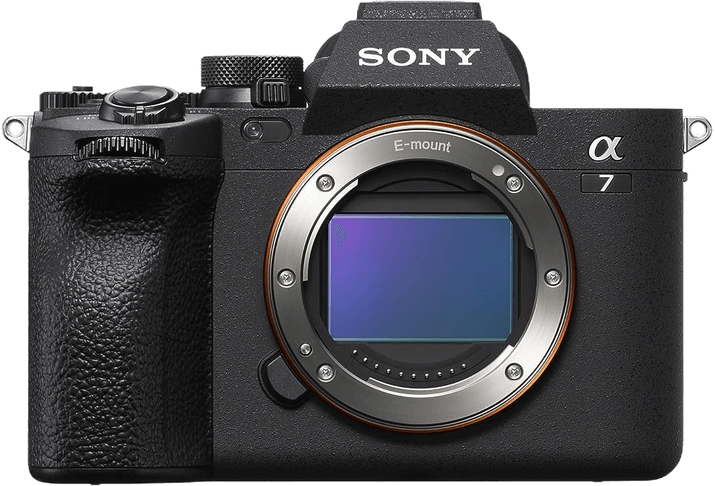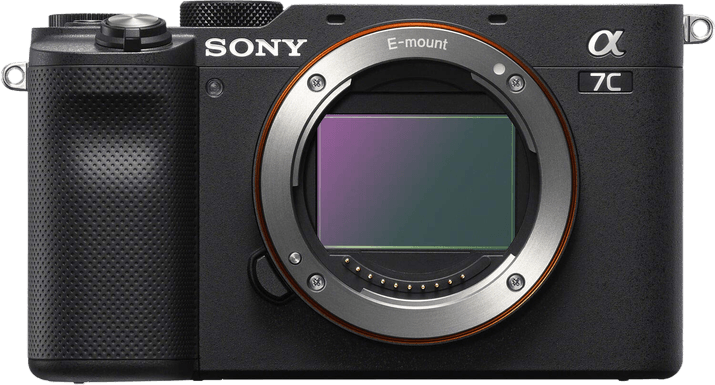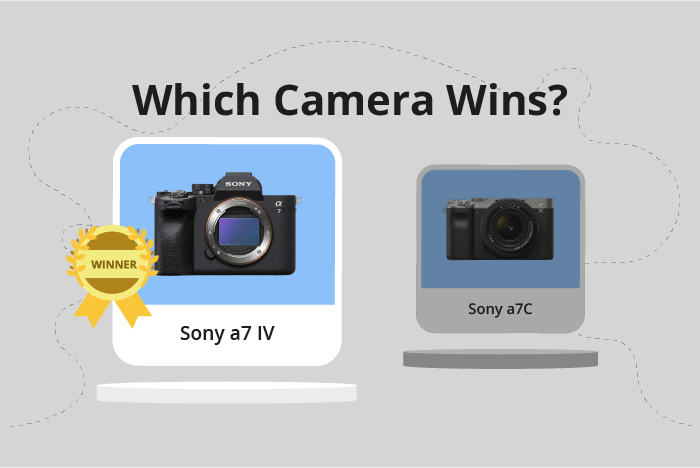Sony a7 IV vs a7C Comparison
Sony a7 IV

Sony a7C

The Sony a7 IV emerges as the winner with a score of 84/100, while the Sony a7C trails behind at 78/100. Both cameras are mirrorless and were launched in 2021 and 2020, respectively. They share similarities in their design and functionality.
The a7 IV outperforms the a7C with its higher score, justifying its higher launch price of $2499 compared to the a7C’s $1799. Its larger size (131 x 96 x 80mm) and weight (659g) contribute to a more robust build, providing improved ergonomics and durability.
On the other hand, the a7C has its advantages with its compact form (124 x 71 x 60mm) and lighter weight (509g), making it a more travel-friendly option. Despite its lower score, it still offers great performance at a more affordable price point.
Taking these factors into account, the Sony a7 IV stands out as the superior camera, but the Sony a7C remains a viable option for those seeking a compact and budget-friendly alternative.
Sony a7 IV vs a7C Overview and Optics
The Sony a7 IV outperforms the Sony a7C in optics with a score of 85/100 compared to the Sony a7C’s 80/100. Both cameras share several specifications, including a CMOS sensor, full-frame sensor size, Sony FE lens mount, and image stabilization. Additionally, they both have a shooting speed of 10 frames per second.
The Sony a7 IV surpasses the Sony a7C in several aspects. It has a higher megapixel count at 33, compared to the Sony a7C’s 24.2, resulting in more detailed and higher resolution images. Moreover, the Sony a7 IV utilizes the Bionz XR processor, which is more advanced than the Bionz X processor in the Sony a7C. This leads to better image processing and overall performance. The Sony a7 IV also has a higher DXOMARK score for the sensor at 97, as opposed to the Sony a7C’s 95, indicating superior image quality.
On the other hand, the Sony a7C does not have any significant advantages over the Sony a7 IV in terms of optics. The only shared specs are the shooting speed, sensor type, sensor size, lens mount, and image stabilization.
Taking into account the differences in megapixels, processors, and DXOMARK scores, the Sony a7 IV is the clear winner in optics. The advanced features of the Sony a7 IV make it an excellent choice for photographers seeking higher resolution images and better overall performance. In contrast, the Sony a7C does not offer any notable advantages in this aspect, making the Sony a7 IV a superior option for those prioritizing optics.
Sony a7 IV vs a7C Video Performance
The Sony a7 IV outperforms the Sony a7C in video capabilities, earning a score of 91/100 compared to the a7C’s 70/100. Both cameras share some common specifications, such as a maximum video resolution of 4K and dimensions of 3840 x 2160. Additionally, both cameras have built-in time-lapse functionality, making them suitable for capturing dynamic scenes over extended periods.
The Sony a7 IV excels in its video frame rate, offering a maximum of 120fps, which is significantly higher than the Sony a7C’s 30fps. This higher frame rate allows the a7 IV to capture smoother slow-motion footage, providing more flexibility for videographers who require precise control over their footage. The a7 IV’s superior frame rate contributes to its higher video score, making it the better choice for those prioritizing video performance.
While the Sony a7C has a lower video score and frame rate, it still delivers high-quality 4K footage at 30fps. This frame rate is sufficient for most casual users and some professionals who do not require the advanced slow-motion capabilities offered by the a7 IV. The a7C’s video capabilities are not necessarily inferior but cater to a different set of needs and preferences.
Comparing the video capabilities of both cameras, the Sony a7 IV is the clear winner for those seeking advanced video features and higher frame rates. However, the Sony a7C remains a viable option for users who prioritize other aspects of camera performance or have less demanding video requirements. Each camera serves a distinct purpose, and potential buyers should consider their specific needs before making a decision.
Sony a7 IV vs a7C Features and Benefits
The Sony a7 IV outperforms the Sony a7C with a feature score of 83/100, while the a7C scores 81/100. Both cameras share several specifications, including a 3-inch screen, touchscreen functionality, flip screen, GPS absence, and WIFI and Bluetooth connectivity.
The a7 IV excels in screen resolution, offering 1,040,000 dots compared to the a7C’s 921,600 dots. This higher resolution provides a clearer and more detailed display, enhancing user experience when reviewing images or navigating menus. Additionally, the a7 IV’s overall higher feature score highlights its superiority in offering more advanced features and better performance.
The Sony a7C, despite its slightly lower score, still has some advantages. Its compact size and lighter weight make it more portable and convenient for travel or on-the-go photography. However, these benefits do not outweigh the a7 IV’s higher feature score and better screen resolution.
When considering the features of both cameras, the Sony a7 IV emerges as the winner due to its superior screen resolution and overall higher feature score. The Sony a7C, while still a strong contender, falls short in comparison. Therefore, photographers seeking the best features and performance should opt for the Sony a7 IV, while those prioritizing portability may find the Sony a7C more suitable.
Sony a7 IV vs a7C Storage and Battery
The Sony a7 IV outperforms the Sony a7C in storage and battery, with a score of 76/100 compared to the a7C’s 45/100. Both cameras share some similarities, such as using the NP-FZ100 battery type and offering USB charging functionality.
The a7 IV has a clear advantage in storage, as it features two memory card slots, accepting both CFexpress Type A and SD cards (UHS-II compatible). This allows for more storage capacity and flexibility in file management. On the other hand, the a7C has only one memory card slot, accepting SD, SDHC, and SDXC cards (UHS-II compatible).
Despite the a7 IV’s higher storage and battery score, the a7C has a longer battery life, providing 740 shots compared to the a7 IV’s 580 shots. This makes the a7C more suitable for extended shooting sessions without needing to change the battery.
Considering these factors, the Sony a7 IV offers better storage capabilities while the Sony a7C provides a longer battery life. Users should weigh their priorities when choosing between the two cameras.
Alternatives to the Sony a7 IV and a7C
Are you still undecided about which camera is right for you? Have a look at these popular comparisons that feature the Sony a7 IV or the Sony a7C:

